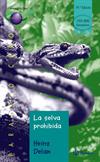
The Lion in the Living Room: How House Cats Tamed Us and Took Over the World
1 journaler for this copy...
A book that I borrowed from CLC, so not available for bookcrossing per se.
8 stars: Very good.
From the back cover: The correct reaction to a house cat isn't "awww" it's "awe". Cats are incredible creatures; they eat practically anything and live almost anywhere, ruling bedrooms and deserted Antarctic islands alike. But cats do humans very few favors--especially compared with dogs. So why do we feed and caress them and obsess over them online? How did tiny felines become global overlords?
To better understand the furry strangers in our midst, Abigail Tucker investigates the way house cats have used their relationship with humans to become one of the most powerful animals on the planet. Tracing their rise from prehistory to the modern cat craze, she meets and pets champion pure breeds and the latest mutants, attends a cats' rights convention, and treks through the wilderness in search of house cats on the loose. It's the fascinating story of how cats conquered the world--- and the human heart.
-----------------
While the above description covers the facts of this book, it didn't really describe its charm. I really appreciated how it used science and history to explain that cats really are "little lions in the living room" --nearly indistinguishable genetically from their ancestors. The book posits that they "domesticated humans" to get access to food and shelter, vs. us domesticating them. There are only a few generic cat breeds, vs. hundreds of dog breeds that are nothing like their forebears. The chapter that describes needing to keep an active environment for housecats gave me a little pang of guilt that they were not getting the excitement and stimulation that carnivorous hunters require. (The comment above about them eating almost anything is patently untrue--they require a steady diet of almost entirely meat).
I loved this cat---and read while mourning the loss of my beloved Buttons, with Nokie and Levidora (aka "the Destroyer") by my side. >^..^<
Some quotes I liked:
Cats are classified as one of the world's 100 worst invasive species, accused of damaging a range of ecosysterms and even driving some endangered animals to extinction. Australian scientists recently described stray cats as a bigger menace to the continent's mammals than global warming or habitat loss; in a landscape teeming with great white sharks and common death adders, it is the house cat that Australia's Minister of the Environment has singled out as a "savage beast". Bewildered animal lovers sometimes can't decide if we should spoon feed cats canned salmon with creme fraiche or harden our hearts against them forever.
Cats have changed so little physically during their time around people that even today experts can't tell house tabbies from wild cats. This greatly complicates the study of cat domestication. It's all but impossible to pinpoint the cats transition into human life by examining ancient fossils, which hardly change even into modernity.
The International Union for Conservation of Nature ranks house cats as one of the world's worst invasive species, an unusually glamorous addition to the icky litany of advancing fungi, mollusks, shrubs, and other brainless, aimless beings. The dreaded list includes a few carnivores, let alone hypercarnivores. But the house cat's extreme adaptability and reproductive prowess, its tweaked domestic physique, and its special relationship with man make it a very formidable alien. And while its tempting to pretend that only stray cats cause problems, in truth our cuddly pets are as suspect as the mangiest ferals.
As predators, house cats have almost supernatural powers: they can see in the ultraviolet, they can hear in the ultrasound, and they have an uncanny understanding of three dimensional space that allows them, along other things, to judge the height of sounds.
Like so many feline matters, cats' interaction style, or lack thereof, comes down to protein and its procurement. And again, the best way to understand this deficit is in contrast with dogs. [section on dogs being pack animals and joining together to hunt. Also, early humans did the same]. But cats, as we've seen, are consummate loners. Almost all wild cats live and hunt solo, plying a tract of land that is exclusively theirs, only rarely meeting members of their own species. Cooperation of any sort is more or less impossible ... As nature's recluses, cats never evolved expressive skills, because there were no other cats around to read them--thus the cats family's trademark deadpan look. CAts don't wag their tails, cock their ears, or make puppy eyes, nor can they interpret such signs. Cats few visual cues are typically delivered only in life or death moments, when they arch their backs and puff up like blowfish. Nor do cats, as ambush predators reliant on stealth, make such use of vocal signals. The cats main communicative medium is pheremones, pungent messages that can be dispatched or received without any kind of unwelcome face time.
Trapped in a house and with no other recourse, every pet cat sets about the daunting task of bringing its thick skulled human to heel. Since this chore is well beyond the scope of normal feline social life, the cat must more or less start from scratch, performing what accounts to a set of tests on human subjects. Indeed, it turns out that what we think of as cats affection or love for us is not only not unconditional, it is actively conditioning. CAts are experimental architects; we are Pavlov's dogs.
Perhaps the most famous feline assailant of recent years was an unhinged Himalyan named Luxe who bit a 7 month old baby in Seattle, and then chased his entire family into a bedroom, where they dialled 911. An audio clip from the call went viral online. "Do you think the cat will try to attack the police?" the dispatcher asks. "Yes" Luxe's owner replies unequivocally, while his 22 pound pet caterwauls in the background.
8 stars: Very good.
From the back cover: The correct reaction to a house cat isn't "awww" it's "awe". Cats are incredible creatures; they eat practically anything and live almost anywhere, ruling bedrooms and deserted Antarctic islands alike. But cats do humans very few favors--especially compared with dogs. So why do we feed and caress them and obsess over them online? How did tiny felines become global overlords?
To better understand the furry strangers in our midst, Abigail Tucker investigates the way house cats have used their relationship with humans to become one of the most powerful animals on the planet. Tracing their rise from prehistory to the modern cat craze, she meets and pets champion pure breeds and the latest mutants, attends a cats' rights convention, and treks through the wilderness in search of house cats on the loose. It's the fascinating story of how cats conquered the world--- and the human heart.
-----------------
While the above description covers the facts of this book, it didn't really describe its charm. I really appreciated how it used science and history to explain that cats really are "little lions in the living room" --nearly indistinguishable genetically from their ancestors. The book posits that they "domesticated humans" to get access to food and shelter, vs. us domesticating them. There are only a few generic cat breeds, vs. hundreds of dog breeds that are nothing like their forebears. The chapter that describes needing to keep an active environment for housecats gave me a little pang of guilt that they were not getting the excitement and stimulation that carnivorous hunters require. (The comment above about them eating almost anything is patently untrue--they require a steady diet of almost entirely meat).
I loved this cat---and read while mourning the loss of my beloved Buttons, with Nokie and Levidora (aka "the Destroyer") by my side. >^..^<
Some quotes I liked:
Cats are classified as one of the world's 100 worst invasive species, accused of damaging a range of ecosysterms and even driving some endangered animals to extinction. Australian scientists recently described stray cats as a bigger menace to the continent's mammals than global warming or habitat loss; in a landscape teeming with great white sharks and common death adders, it is the house cat that Australia's Minister of the Environment has singled out as a "savage beast". Bewildered animal lovers sometimes can't decide if we should spoon feed cats canned salmon with creme fraiche or harden our hearts against them forever.
Cats have changed so little physically during their time around people that even today experts can't tell house tabbies from wild cats. This greatly complicates the study of cat domestication. It's all but impossible to pinpoint the cats transition into human life by examining ancient fossils, which hardly change even into modernity.
The International Union for Conservation of Nature ranks house cats as one of the world's worst invasive species, an unusually glamorous addition to the icky litany of advancing fungi, mollusks, shrubs, and other brainless, aimless beings. The dreaded list includes a few carnivores, let alone hypercarnivores. But the house cat's extreme adaptability and reproductive prowess, its tweaked domestic physique, and its special relationship with man make it a very formidable alien. And while its tempting to pretend that only stray cats cause problems, in truth our cuddly pets are as suspect as the mangiest ferals.
As predators, house cats have almost supernatural powers: they can see in the ultraviolet, they can hear in the ultrasound, and they have an uncanny understanding of three dimensional space that allows them, along other things, to judge the height of sounds.
Like so many feline matters, cats' interaction style, or lack thereof, comes down to protein and its procurement. And again, the best way to understand this deficit is in contrast with dogs. [section on dogs being pack animals and joining together to hunt. Also, early humans did the same]. But cats, as we've seen, are consummate loners. Almost all wild cats live and hunt solo, plying a tract of land that is exclusively theirs, only rarely meeting members of their own species. Cooperation of any sort is more or less impossible ... As nature's recluses, cats never evolved expressive skills, because there were no other cats around to read them--thus the cats family's trademark deadpan look. CAts don't wag their tails, cock their ears, or make puppy eyes, nor can they interpret such signs. Cats few visual cues are typically delivered only in life or death moments, when they arch their backs and puff up like blowfish. Nor do cats, as ambush predators reliant on stealth, make such use of vocal signals. The cats main communicative medium is pheremones, pungent messages that can be dispatched or received without any kind of unwelcome face time.
Trapped in a house and with no other recourse, every pet cat sets about the daunting task of bringing its thick skulled human to heel. Since this chore is well beyond the scope of normal feline social life, the cat must more or less start from scratch, performing what accounts to a set of tests on human subjects. Indeed, it turns out that what we think of as cats affection or love for us is not only not unconditional, it is actively conditioning. CAts are experimental architects; we are Pavlov's dogs.
Perhaps the most famous feline assailant of recent years was an unhinged Himalyan named Luxe who bit a 7 month old baby in Seattle, and then chased his entire family into a bedroom, where they dialled 911. An audio clip from the call went viral online. "Do you think the cat will try to attack the police?" the dispatcher asks. "Yes" Luxe's owner replies unequivocally, while his 22 pound pet caterwauls in the background.












